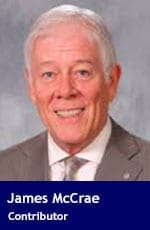Indigenous Canadians are trapped in a cycle of dependency and betrayal, denied dignity and opportunity by a broken system

For interview requests, click here
Indigenous families across Canada have endured a legacy of broken promises, mistreatment, and exploitative policies. Today, that suffering is compounded by a complex web of leaders, consultants, activists, and officials – sometimes referred to as the “Aboriginal Industry” – who may benefit from maintaining a system of dependency.
This cycle has left many Indigenous families feeling angry, anxious, and deeply distrustful, not just of the Canadian government but of their own leaders as well.
For Indigenous families, these cycles of exploitation are particularly painful. Generations have been left dependent on taxpayer support, trapped in a system that prevents them from achieving self-sufficiency and equality.
 |
| Recommended |
| Is the TRC Report as accurate as it claims?
|
| Beaver Lake Cree Nation’s fight for treaty rights drags on
|
| The truth about genocide in Canada
|
Imagine a child who wakes up from a nightmare, expecting to be comforted and reassured that their fears aren’t real. But what if the adults around them insisted the nightmare was real, feeding their anxiety instead of soothing it? Good parents would never do this – yet this is effectively how Indigenous Canadians have been treated, kept in a cycle of dependency and pain rather than empowered and supported.
This treatment continues today. Indigenous Canadians, as one outspoken community member put it, “are human beings.” Human beings deserve respect, dignity, and equal opportunity – not the “special treatment” that, for over a century, has confined Indigenous people to a marginalized status under the Indian Act. Since 1876, the Indian Act and subsequent treaties have isolated Indigenous people on uneconomic reserves, stripped them of property ownership rights, and limited their access to employment, credit, and opportunities for integration.
Most damaging of all, these policies have deprived many Indigenous people of effective, responsible leadership. For too long, power has been concentrated in the hands of a few, leaving ordinary Indigenous Canadians with little voice in how they’re governed or how funds are used to support their communities.
Many Canadians are genuinely sorry for the wrongs of the past. There have been sincere apologies, public acknowledgments, and financial compensation, the usual responses to almost every demand from the Aboriginal Industry. This “Industry” includes chiefs, activists, consultants, lawyers, and even Truth and Reconciliation commissioners. And let’s not forget the media, which has amplified these issues, especially since May 27, 2021, when the alleged discovery of unmarked graves at the Kamloops Residential School captured national attention. The claim of 215 buried children was later proven unsubstantiated, yet the announcement remained uncorrected and fuelled further mistrust and outrage. This unproven claim has become a crucial part of the nightmare, keeping the cycle of guilt and compensation alive.
The Aboriginal Industry has leveraged this collective national guilt to its advantage, extracting money and influence but rarely focusing on forgiveness, healing, or fostering a shared vision of equality. Canadians, including many Indigenous individuals, increasingly see that this system benefits a few at the expense of the majority.
The blame, however, doesn’t lie solely with the Aboriginal Industry. For decades, successive federal and provincial governments have fed this nightmare, sidestepping meaningful reforms like those proposed in the 1969 White Paper on Indigenous Peoples. Pierre Trudeau’s government understood that the 100-year-old apartheid system created by the Indian Act was unsustainable. They proposed integrating status Indians as full, equal Canadian citizens, dismantling the system of segregation that had failed them.
Who stopped this effort? The Aboriginal Industry is led by those with the most to lose – chiefs and councillors whose power and financial benefits depend on maintaining the current system. Over 600 First Nations chiefs resisted the White Paper reforms, blocking Indigenous equality. They chose to preserve their power and privileges rather than champion genuine self-sufficiency and opportunity for the individuals in their communities.
Judicial decisions have further entrenched this inequality, interpreting treaties in ways that prolong dependency and marginalization for ordinary Indigenous people while protecting the authority of a few.
After more than 50 years, Canada’s Indigenous population remains caught in a system that has betrayed them, condemned to cycles of dependency and frustration. Describing the Indian Act and treaties as “sacred” disregards the harm they’ve caused. The cry for dignity – “We are human beings” – continues to be ignored, while Indigenous leaders and their allies profit from a status quo that traps others in poverty and hopelessness.
As a federal election approaches, Indigenous Canadians should ask if they can dare to hope for real change. Can they hope for a future where they are empowered as equal citizens, free from the constraints of outdated policies? The goal should be true equality – Indigenous Canadians living with the same rights, respect, and opportunities as all other Canadians.
Ending this nightmare requires leaders who will prioritize the people over the system and who will dismantle barriers to self-sufficiency rather than uphold them. It’s time to commit to a Canada where every Indigenous person has the opportunity to thrive, participate, and be respected equally.
James C. McCrae is the former attorney general of Manitoba and Canadian citizenship judge. This column was submitted by the Frontier Centre for Public Policy.
Explore more on Residential schools, Aboriginal politics, Aboriginal reconciliation
Troy Media
Troy Media is committed to empowering Canadian community news outlets by providing independent, insightful analysis and commentary. Our mission is to support local media in building an informed and engaged public by delivering reliable content that strengthens community connections, enriches national conversations, and helps Canadians learn from and understand each other better.
